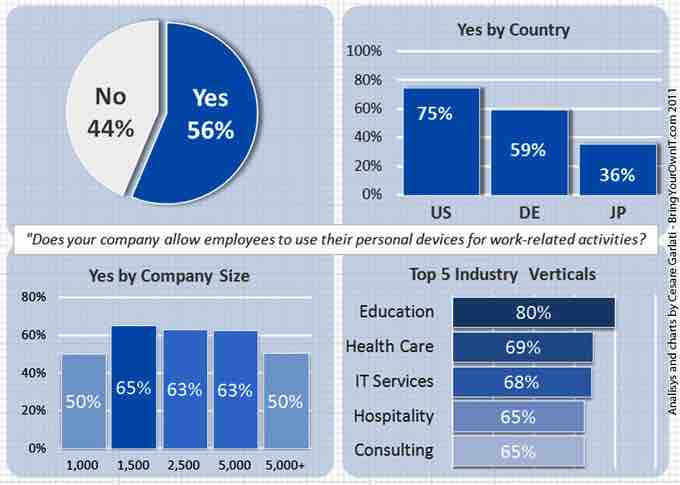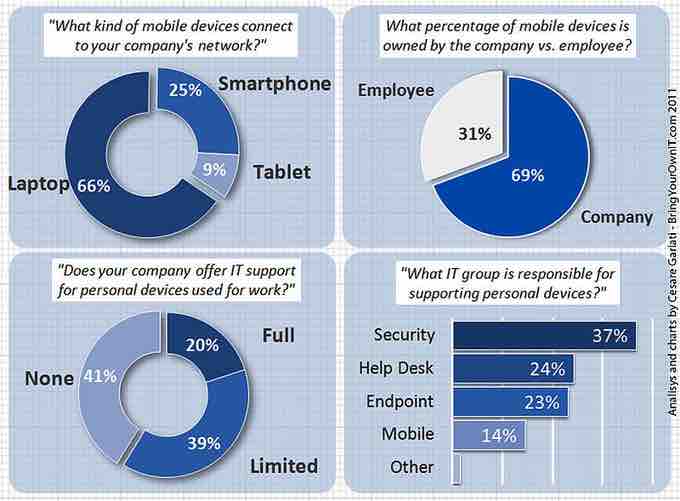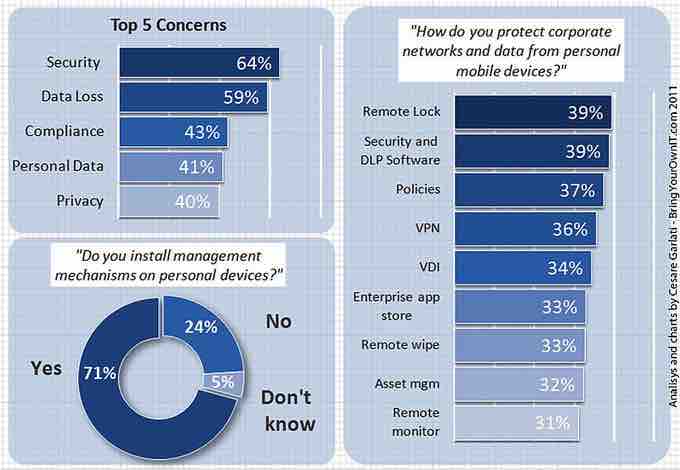Consumerization is the growing tendency for new information technology to emerge first in the consumer market and then spread into business and government organizations. The emergence of consumer markets as the primary driver of information technology innovation is seen as a major IT industry shift, as large business and government organizations dominated the early decades of computer usage and development .

Consumerization Facts - Part 1
A survey was conducted in June 2011 in the U.S., Germany and Japan among IT personnel. It found that consumerization has reached a tipping point.
It was the growth of the World Wide Web in the mid 1990s that began the modern pattern of consumerization. In particular the rise of free, advertising-based services such as email and search engines from companies like Hotmail and Yahoo! began to establish the idea that consumer IT offerings based on a simple Internet browser were often viable alternatives to traditional business computing approaches. In recent years, this view has become increasingly accepted due to the widespread reliance on free, advertising-based services from a growing number of firms such as Google, Facebook and Twitter .

Consumerization Facts - Part 2
The report also found that a strategic approach to consumerization starts with providing IT support to personal devices.
Business Implications
The primary impact of consumerization is that it is forcing businesses, especially large enterprises, to rethink the way they procure and manage IT equipment and services. Historically, central IT organizations controlled the great majority of IT usage within their firms—choosing or, at least, approving the systems and services that employees used. Today, employees and departments are becoming increasingly self-sufficient in meeting their IT needs. Products have become easier to use, and cloud-based, software-as-a-service offerings are addressing an ever-widening range of business needs in areas such as video-conferencing, digital imaging, business collaboration, salesforce support and systems back-up.
Equally important is the fact that large enterprises have become increasingly dependent upon consumerized services that provide search capabilities, mapping, and social interaction. The capabilities of firms such as Google, Facebook and Twitter are now essential components of many firms' marketing strategies. One of the most important consumerization questions going forward is to what extent such advertising-based services will spread into major corporate applications such as email, Customer Relationship Management (CRM), and Intranets.
One of the more serious, negative implications of consumerization is that security controls have been slower to be adopted in the consumer space. As a result, there is an increased risk to the information assets accessed through these less trustworthy consumerized devices . This shortcoming may soon be remedied by the chip manufacturers through technologies such as Intel's "Trusted Execution Technology" and ARM's "Trust Zone. "

Consumerization Facts - Part 3
Lastly, the report found that new IT tools reduce security risks and management costs.
Technology Implications
In addition to the mass market changes above, consumer markets are now changing large scale computing as well. The giant data centers that have been and are being built by firms such as Google, Apple, Amazon and others are far larger and generally much more efficient than the data centers used by most large enterprises. For example, Google is said to support over 300 million Gmail accounts, while executing more than 1 billion searches per day. Supporting these consumer-driven volumes requires new levels of efficiency and scale, and this is transforming many traditional data center approaches and practices. Among the major changes are reliance on low cost, commodity servers, N+1 system redundancy, and largely unmanned data center operations.